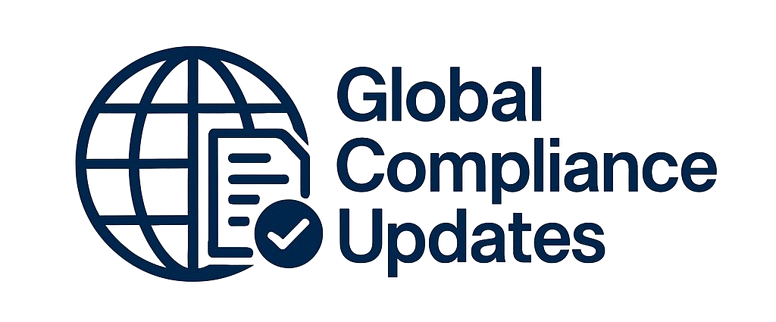Many HR Professionals and supervisors have had difficulty documenting negative performance and proper disciplinary actions for many years. Even the best supervisors find this part of the disciplinary action uncomfortable or anxiety-provoking. Moreover, incorrect documentation of negative behavior or lack of documentation can be an Employer’s nightmare. It can also lead to litigation and other scrutiny and allegations of discrimination and wrongful termination which can impact an organization’s reputation and can deliver huge fines and penalties.
There are federal and state laws that determine what documentation is needed, where it should go, and who sees it. Moreover, there are documentation mandates for Employers when it comes to COVID-19, vaccine documents, and different medical documents that can be used to confirm vaccine information. There are clear guidelines for Employers to ensure they follow the medical guidelines as well as the legal written policy to avoid litigation.
It is clear that documentation is key in the workplace. When it comes to written documentation, employers should ensure that they stick to factual documentation versus coming to a generalized legal conclusion, such as the employee committing harassment or discrimination. In order to terminate an employee, generally, all that is needed is to show the employee violated a policy. If the employer documents what they believe is a legal conclusion, this can be an admission of legal liability vs. an internal policy violation.
WHY SHOULD YOU ATTEND?
Creating a solid documentation trail is critical for employers when working with an employee on performance issues. Documentation creates a written history of the happenings and discussions that occur around specific events. In a legal proceeding, having documentation about the employee’s past performance is key to obtaining an outcome favorable to the employer.
Most employers have a progressive discipline policy that involves providing feedback in a series of increasingly more formal communications starting with verbal warnings and ending with written warnings prior to a termination decision. Determining how, when, and what to include in performance documentation can often be tricky.
AREA COVERED
- What documentation is allowed when confirming COVID-19 vaccine status
- What should be avoided when it comes to the documentation of medical information
- What documents should be in the personnel file and what should be out
- How many files should an Employers have for employees
- Written Documentation Myths and Facts
- Why is documentation one of the most difficult aspects of employee relations?
- What are the elements of effective documentation?
- What policies and procedures must be included in an Employee Handbook to support decisions to document any disciplinary action?
- What key issues must be addressed when documenting negative behavior?
- Should you include different incidents in an employee write-up?
- What can an employee do if they do not agree or they want to explain their side of the situation?
- Instructions for Establishing a Performance Improvement Plan (PIP) PIP Template
- How can supervisors increase their success when writing corrective actions?
- Learn to create a written warning and disciplinary actions that withstand legal scrutiny
- Review the elements that have to be included in a written warning/disciplinary action
- What fines and penalties can be levied if no one documents performance
- Dos and Don’ts of documentation
- The importance of the Employee Handbook and the consistency of tracking behaviors
WHO WILL BENEFIT?
- All Employers
- Business Owners
- Company Leadership
- Compliance professionals
- HR Professionals
- Managers/Supervisors
- Employers in all industries
- Small Business Owners
Creating a solid documentation trail is critical for employers when working with an employee on performance issues. Documentation creates a written history of the happenings and discussions that occur around specific events. In a legal proceeding, having documentation about the employee’s past performance is key to obtaining an outcome favorable to the employer.
Most employers have a progressive discipline policy that involves providing feedback in a series of increasingly more formal communications starting with verbal warnings and ending with written warnings prior to a termination decision. Determining how, when, and what to include in performance documentation can often be tricky.
- What documentation is allowed when confirming COVID-19 vaccine status
- What should be avoided when it comes to the documentation of medical information
- What documents should be in the personnel file and what should be out
- How many files should an Employers have for employees
- Written Documentation Myths and Facts
- Why is documentation one of the most difficult aspects of employee relations?
- What are the elements of effective documentation?
- What policies and procedures must be included in an Employee Handbook to support decisions to document any disciplinary action?
- What key issues must be addressed when documenting negative behavior?
- Should you include different incidents in an employee write-up?
- What can an employee do if they do not agree or they want to explain their side of the situation?
- Instructions for Establishing a Performance Improvement Plan (PIP) PIP Template
- How can supervisors increase their success when writing corrective actions?
- Learn to create a written warning and disciplinary actions that withstand legal scrutiny
- Review the elements that have to be included in a written warning/disciplinary action
- What fines and penalties can be levied if no one documents performance
- Dos and Don’ts of documentation
- The importance of the Employee Handbook and the consistency of tracking behaviors
- All Employers
- Business Owners
- Company Leadership
- Compliance professionals
- HR Professionals
- Managers/Supervisors
- Employers in all industries
- Small Business Owners
Speaker Profile
 Margie Faulk
Margie Faulk
Margie Faulk is a senior level human resources professional with over 15 years of HR management and compliance experience. A current Compliance Advisor for HR Compliance Solutions, LLC, Margie, has worked as an HR Compliance advisor for major corporations and small businesses in the small, large, private, public and Non-profit sectors. Margie has provided small to large businesses with risk management strategies that protect companies and reduces potential workplace fines and penalties from violation of employment regulations. Margie is bilingual (Spanish) fluent and Bi-cultural.Margie’s area of expertise includes Criminal Background Screening Policies and auditing, I-9 document correction and storage compliance, …
Upcoming Webinars

ChatGPT and Project Management: Leveraging AI for Project M…

Workplace Investigations 101: How to Conduct your Investiga…

Project Management for administrative professionals

The Monte Carlo Simulations in Excel for Risky Investments

Onboarding is NOT Orientation - How to Improve the New Empl…

Dealing With Difficult People: At Work & In Life

Transform Data into Insights: A Beginners Guide to Excel Pi…

Construction Lending And Real Credit Administration: Evalua…

Understanding Accounting for non - Accounting professionals

Harassment, Bullying, Gossip, Confrontational and Disruptiv…

New Form 1099 Reporting Requirements: 2025 Compliance Update

Human Error Reduction Techniques for Floor Supervisors

HR Metrics and Analytics 2025 - Update on Strategic Plannin…

Treating Employees Like Adults: Discipline versus Empowerme…

7 Ways To Beat Burnout: Without Quitting Your Job


How to Write Procedures to Avoid Human Errors

Handbook Overhaul 2026: Compliance, OBBB Act & Beyond

FDA Proposes Framework to Advance Credibility of AI Models

Ethical Terminations: Navigating Employee Exits with Legal …

Understanding EBITDA – Definition, Formula & Calculation

Project Management for Non-Project Managers - Scheduling yo…

4-Hour Virtual Seminar on Hidden Secrets of Selling & Marke…

Validation Statistics for Non-Statisticians

Data Integrity and Privacy: Compliance with 21 CFR Part 11,…


The Alphabet Soup: When the FMLA, ADA, COBRA, and Workers' …

Talent Management: How to Leverage AI and ChatGPT Tools for…


Offboarding with Care: Conducting Legal & Ethical Employee …

2-Hour Virtual Seminar on How to Conduct an Internal Harass…

Payments Fraud Detect & Prevent Check, ACH and P-Card Schem…

Managing Toxic & Other Employees Who have Attitude Issues



Reduce Stress in the Workplace: Effective Ways to Handle Co…





Excel - Pivot Tables - The Key To Modern Data Analysis and …
